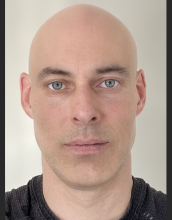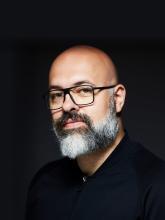Summary
Disclaimer: This summary has been generated by AI. It is experimental, and feedback is welcomed. Please reach out to info@qconsf.com with any comments or concerns.
This presentation by James Arthur highlights the evolution of front-end development, emphasizing the shift from reactivity frameworks to local-first applications built on sync engine architecture. The focus is on building fast, resilient, and user-friendly applications that support real-time collaboration.
Key Concepts:
- Local-First Apps: These apps provide instant usability, real-time collaboration, and eliminate loading delays and stale data.
- Sync Engine Architecture: By using sync engines, applications avoid traditional data-fetching pitfalls and improve data management efficiency.
Benefits of Sync Engine Architecture:
- Enables instant data loads and interaction.
- Supports seamless offline capabilities and real-time updates.
- Facilitates development of AI apps and agentic systems, providing robust multi-user interactions.
- Improves code maintainability and suitability for production environments.
Implementation using TanStack DB:
- TanStack DB is a lightweight, reactive client-side database enabling sync-based applications.
- It allows for incremental migration from traditional cloud-first to fully local-first architectures.
- Supports live queries, transactional mutations, and optimistic state management.
Technological Integration:
- Sync mode can be set to "on demand," allowing query predicates to dynamically request and sync needed data subsets.
- Handles complex queries efficiently with near-instantaneous updates and minimal latency.
Conclusion:
The presentation argues that adopting sync engines is a fundamental shift necessary for modern app development, providing speed, scalability, and improved UX/DX. It encourages the use of readily available tools like TanStack DB for building more effective applications that leverage local-first principles.
This is the end of the AI-generated content.
Abstract
Front-end has long been about reactivity frameworks and client-side state management. However, the alpha in these is receding. The next frontier, with much bigger gains across UX, DX and AX lies in extending reactive state management to the server with local-first apps built on a sync engine architecture.
Local-first apps built on sync are instant to use, always work and naturally support realtime collaboration. Eliminating stale data, loading spinners and manual data wiring. It's an ideal architecture for building AI apps and agentic systems where you have multiple users and agents collaborating on the same state. And the switch from imperative data fetching to declarative sync also makes LLM generated code more maintainable and suitable for production apps.
This talk introduces the principles of local-first and sync engine architecture and shows you how you can adopt these patterns today using TanStack DB, a new reactive client store for building super fast apps on sync that's now built directly into TanStack.
Interview:
What is your session about, and why is it important for senior software developers?
It's about building apps and agentic systems on a local-first, sync-engine architecture that makes apps fast, modern and naturally collaborative.
Why is it critical for software leaders to focus on this topic right now, as we head into 2026?
Software UX, DX, and AX are all being redefined and reinvented right now. Sync is key to building AI apps and agentic systems.
What are the common challenges developers and architects face in this area?
Slow apps. Loading spinners. Stale data. Migration challenges. Operational complexity. Scaling. Silos.
What's one thing you hope attendees will implement immediately after your talk?
Switch one route/fetch/component of one of their apps to use TanStack DB.
Speaker

James Arthur
Co-founder and CEO @ElectricSQL, Previously Co-Founder and CTO @Hazy and @Opendesk
James is Co-Founder and CEO of ElectricSQL. Prior to founding Electric, he co-founded the Post Urban venture builder and was co-founder and CTO of synthetic data company Hazy. Before that, James was co-founder and CTO of digital manufacturing company Opendesk and developed software for companies including Apple and IDEO. James’s projects have won a TED Prize and the $1M Microsoft Prize for the best startup in Europe.








